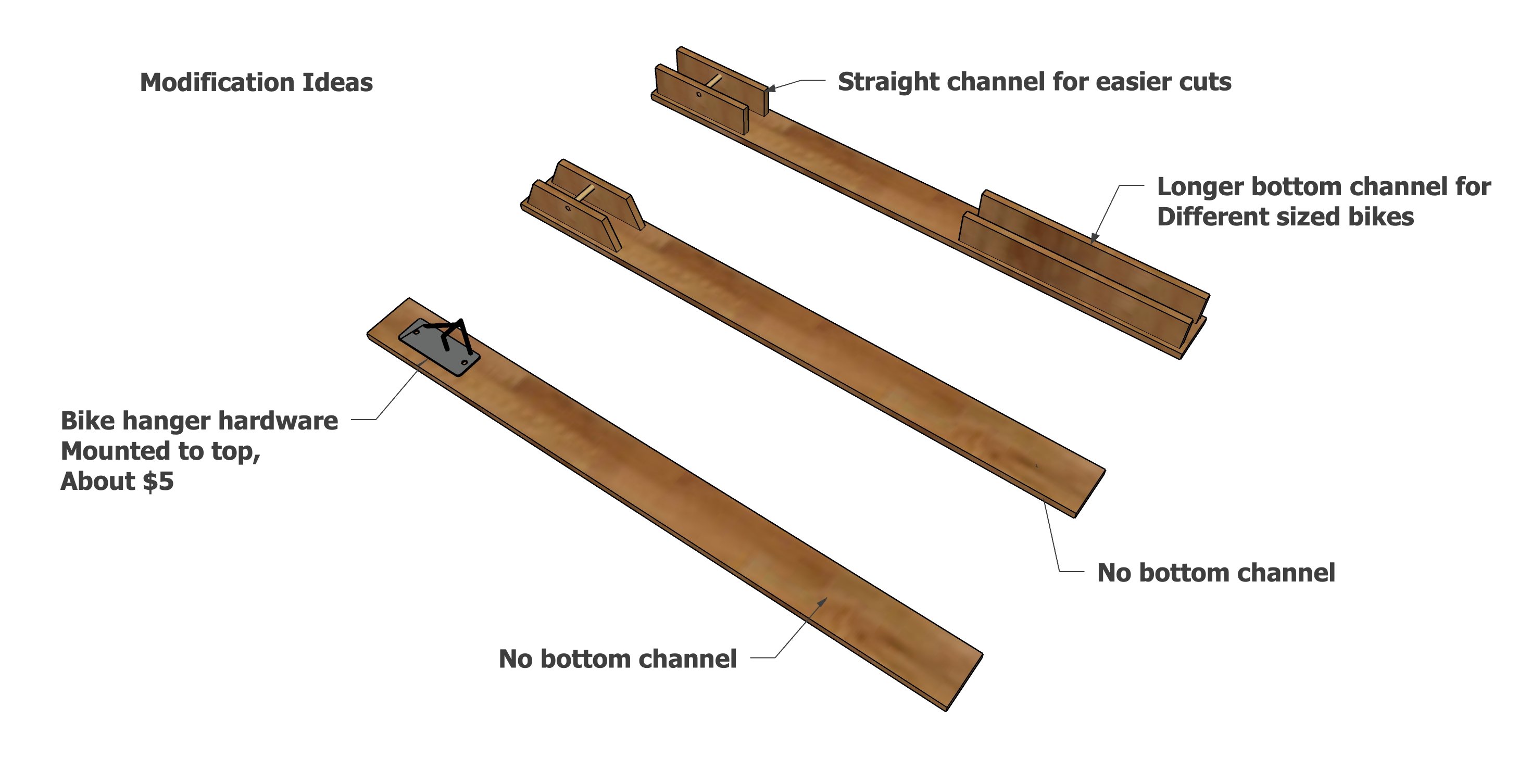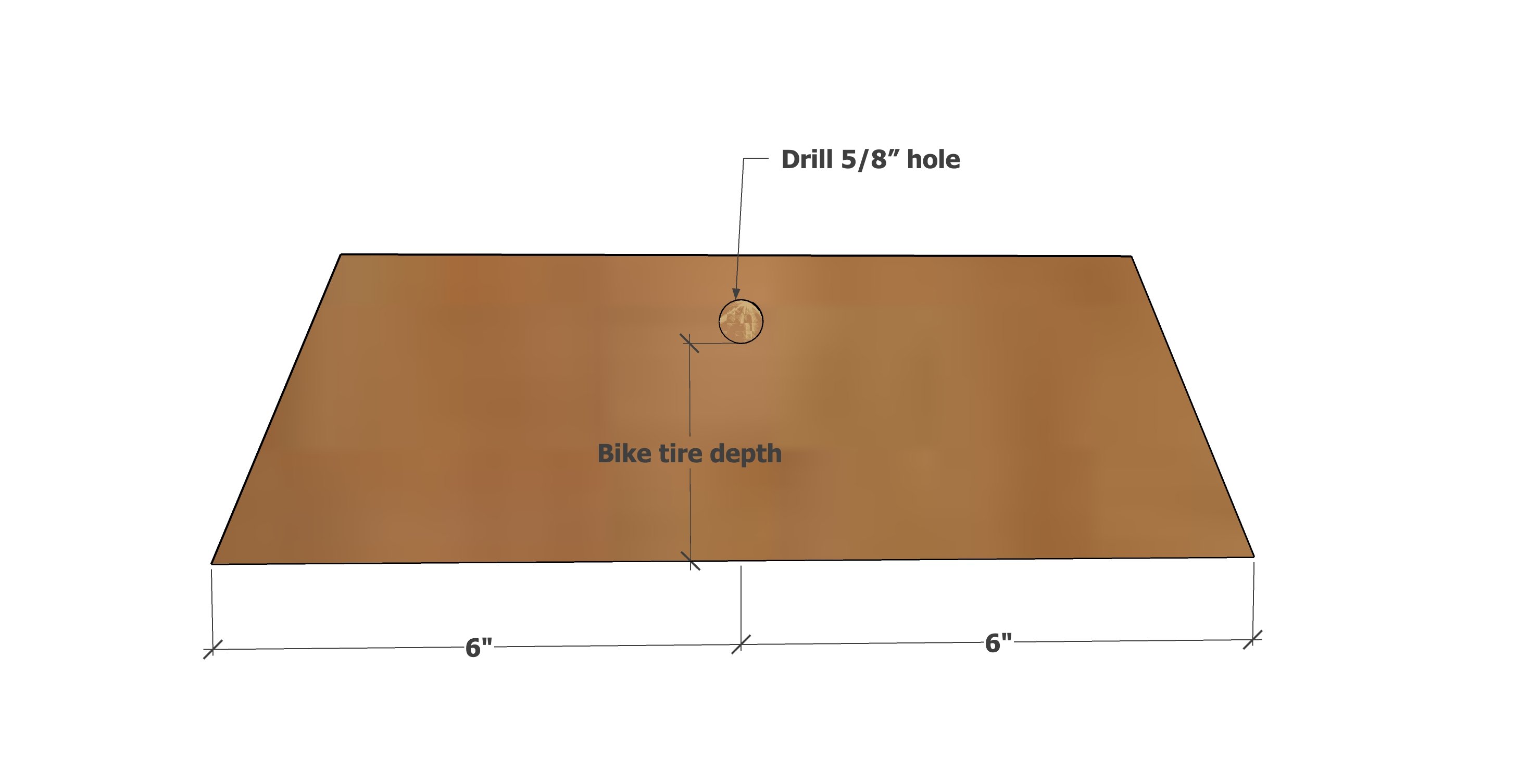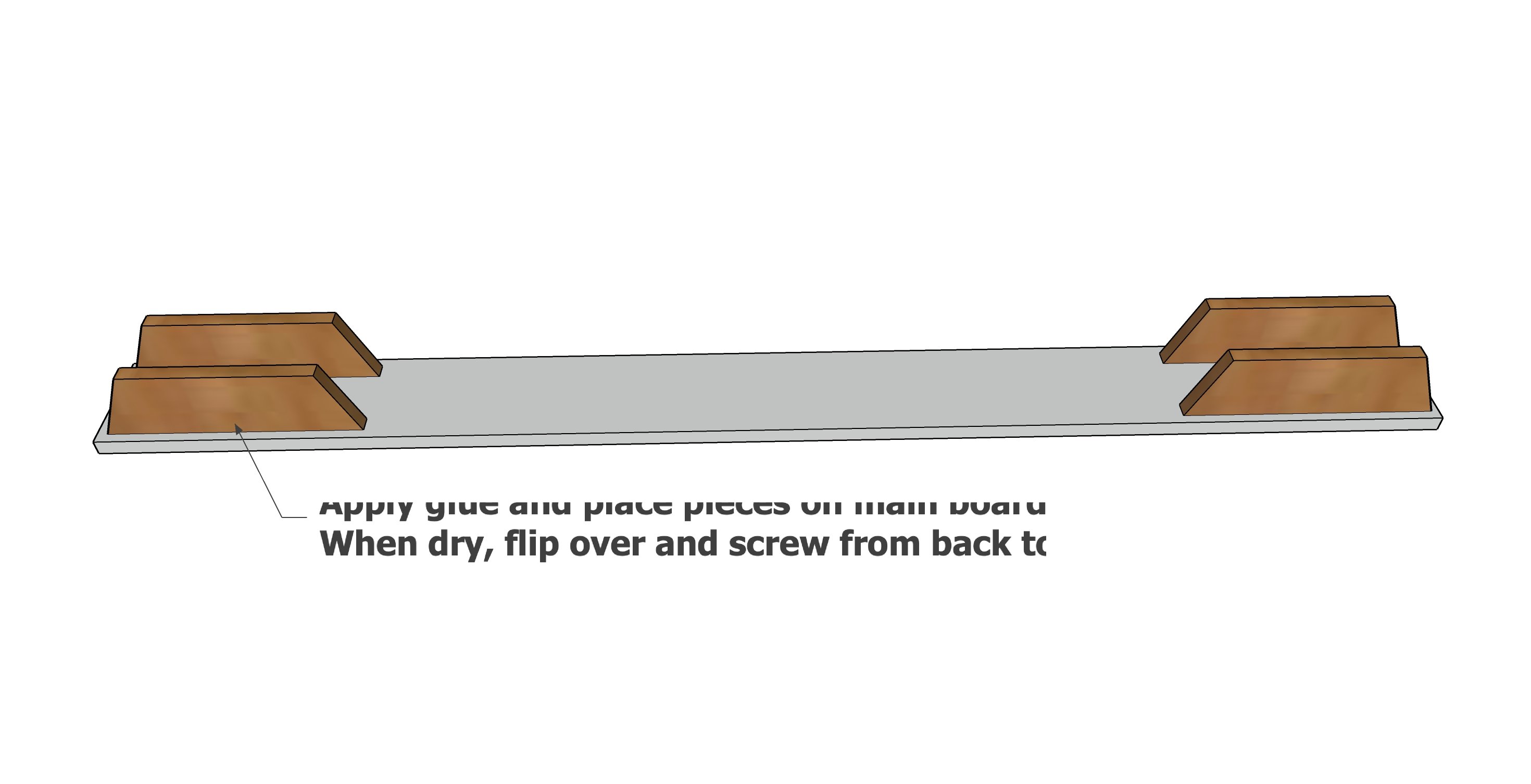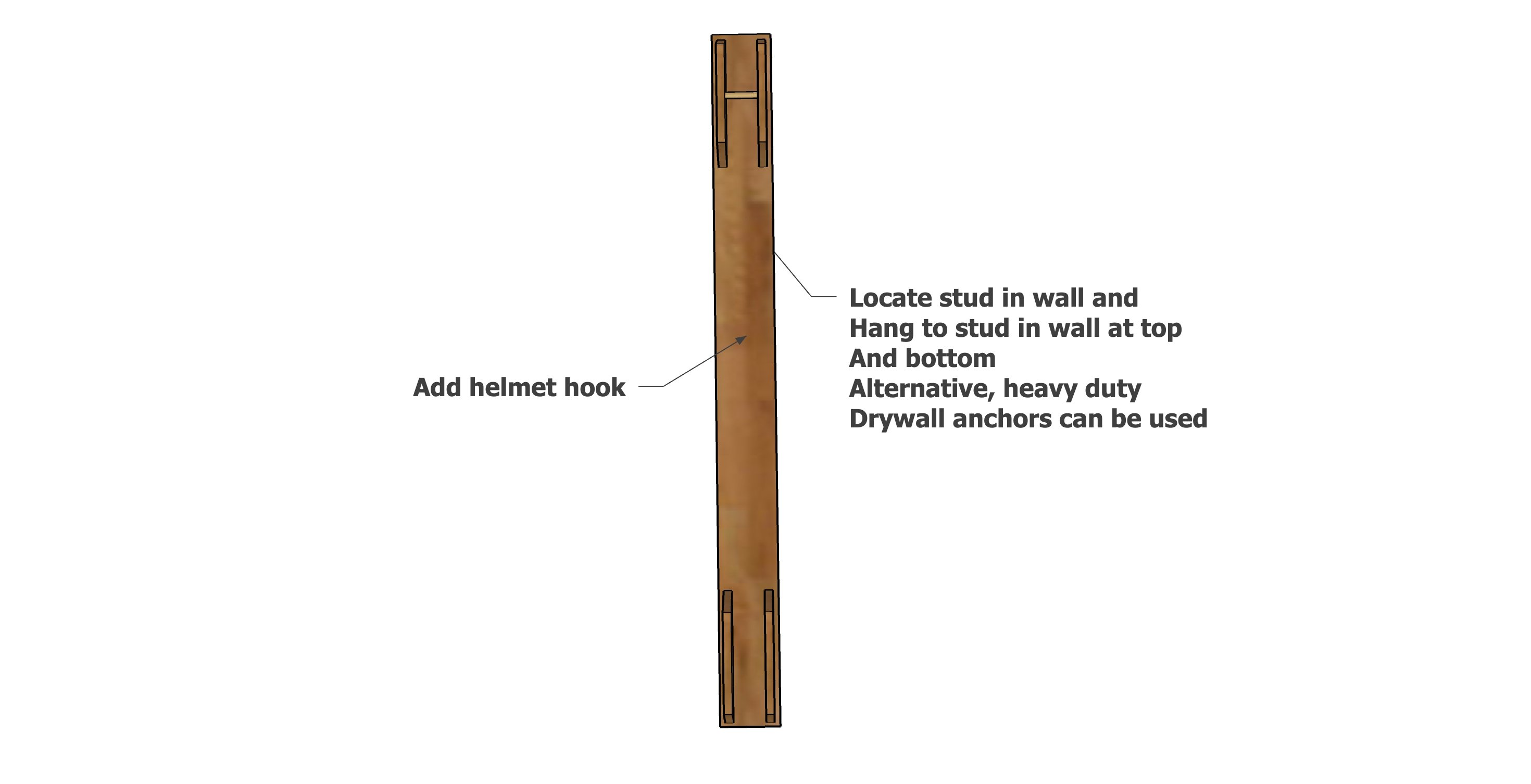A vertical bike rack made of wood to accent your space, this DIY wall bike mount protects your wall, stores a helmet, and is easy to hang and use.
This is a free DIY project plan with video, steps, and supplies list from Ana-White.com
Pin For Later!
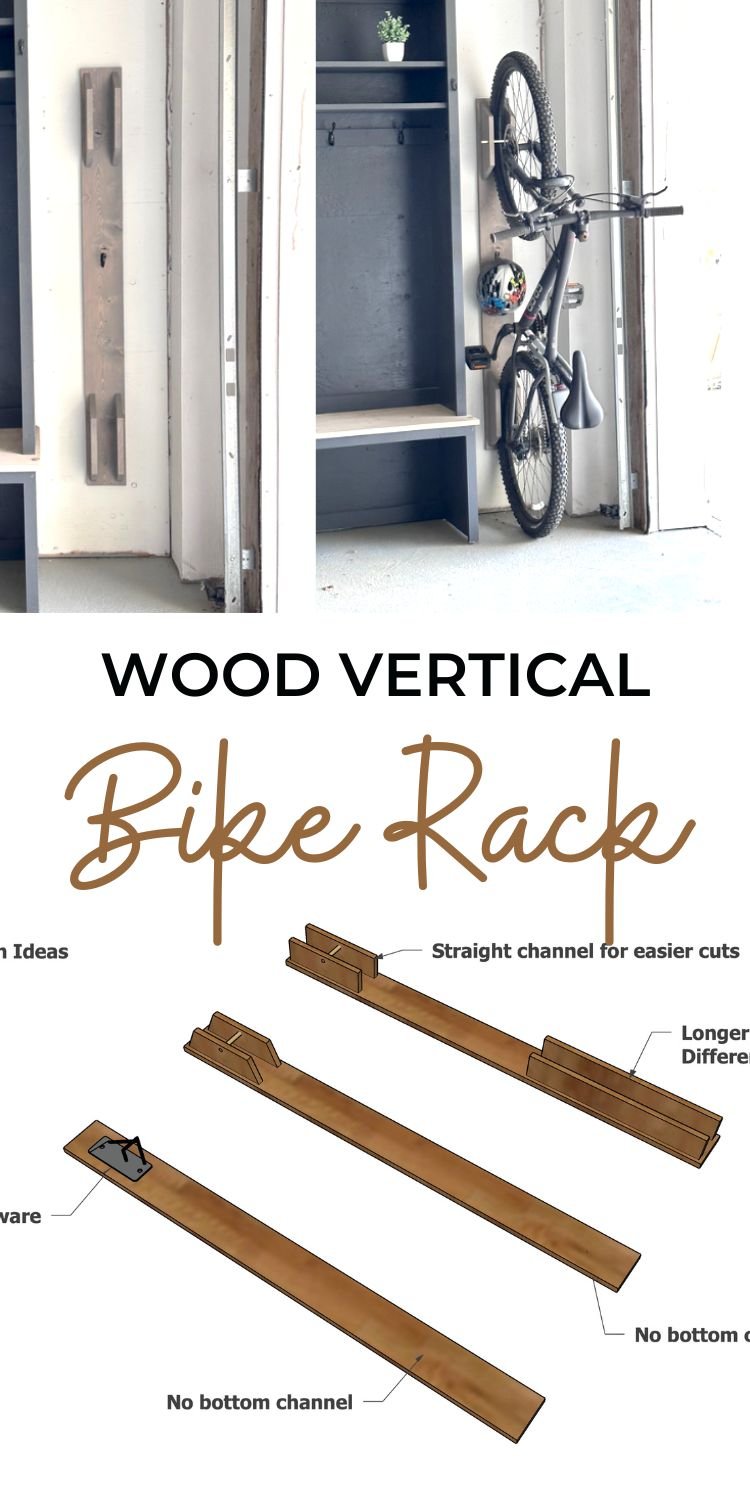
Dimensions
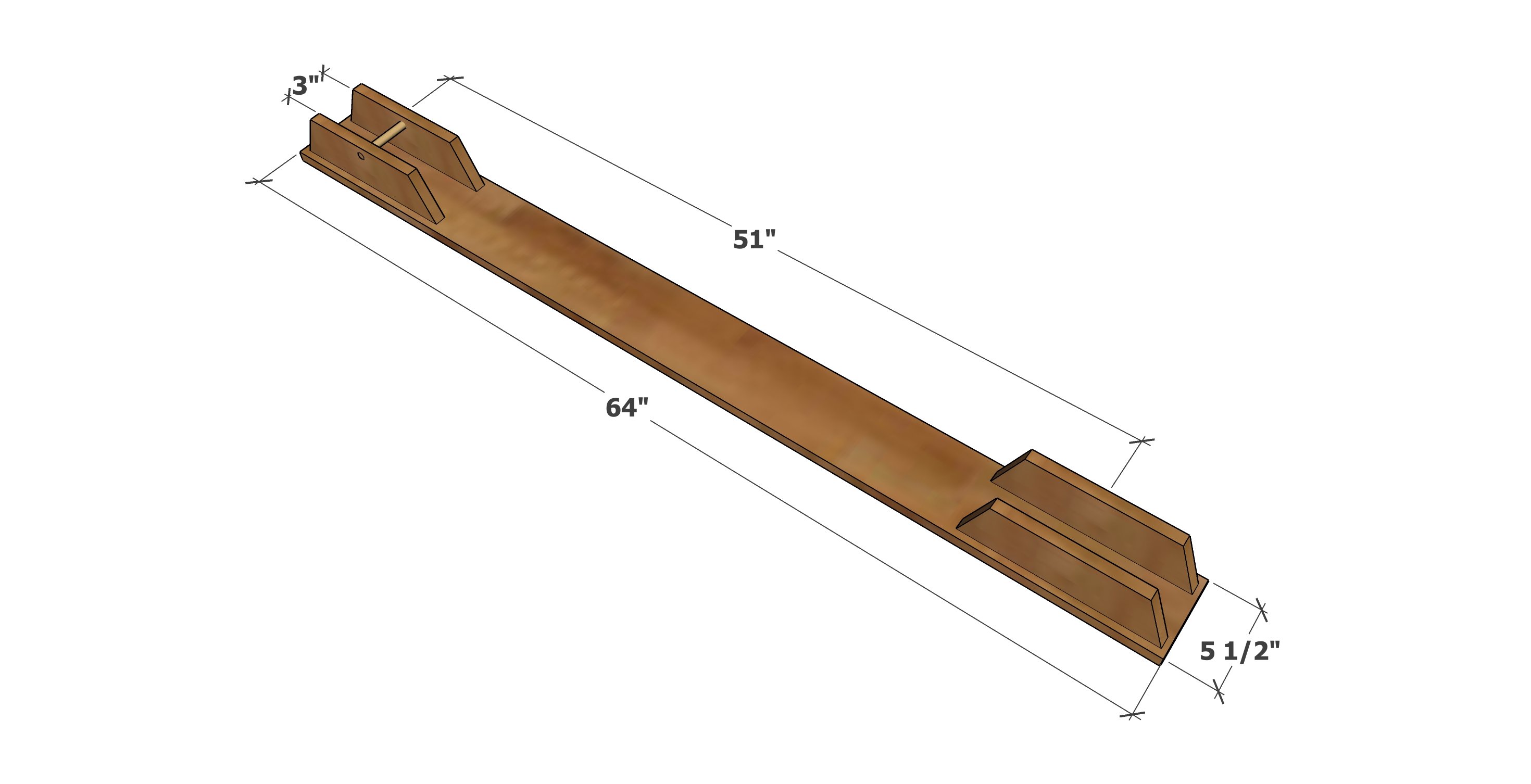
Suitable for most bikes - may need adjustments for mud tires or fat bike tires
Preparation
Shopping List
- 1 - 1x6 @ 6 feet long
- 1 - 1x4 @ 4 feet long
- 8" of 1/2" wood dowel
- 2-1/2" self tapping screws (about 14 screws needed)
- wood glue
Cut List
- 1 - 1x6* @ 64"
- 4 - 1x4** @ 12" - long point to long point measurement, both ends cut at 30 degrees off square, ends NOT parallel
- 1 - 1/2" dowel @ 8" long
*For fat tire bikes or wide bike tires, use a 1x8 instead
**For bigger bike tires, like mud tires or fat bike tires, use a 1x6 instead
Instructions
Step 2
Project Type


